What Can a Non-Surgical Rhinoplasty Achieve?
Non-surgical rhinoplasty, sometimes referred to as liquid rhinoplasty, involves the use of dermal fillers to adjust the appearance of the nose without surgery. This approach may help refine contours or improve facial balance in suitable candidates.
The procedure typically involves minimal downtime, although mild swelling or bruising can occur. Results are visible shortly after treatment and are temporary, as fillers naturally break down over time.
This technique can help soften the appearance of bumps or irregularities and provide subtle refinement to the nasal profile. However, outcomes vary depending on individual anatomy and the amount of product used.
A consultation with a qualified medical practitioner is essential to assess suitability, discuss potential risks, and outline realistic expectations for treatment results.
Can Liquid Rhinoplasty Improve the Appearance of a Crooked Nose?
Liquid rhinoplasty, or non-surgical rhinoplasty, involves the use of dermal fillers to adjust the appearance of the nose without surgery. In some cases, this technique may help improve the visual balance of a mildly asymmetrical nose by adding volume in specific areas.
It is important to note that liquid rhinoplasty does not alter the underlying bone or cartilage structure. Instead, the treatment can help create a more balanced appearance through subtle adjustments to surface contours.
This approach is generally suitable for individuals with mild to moderate irregularities. More significant structural deviations typically require surgical procedures for correction.
As with all injectable treatments, outcomes vary based on individual anatomy, product selection, and practitioner technique. A consultation with a qualified medical professional is necessary to determine suitability, discuss potential risks, and set realistic expectations.
Can Liquid Rhinoplasty Help with a Wide Nose?
Liquid rhinoplasty, also known as non-surgical rhinoplasty, uses dermal fillers to adjust the appearance of the nose without surgery. Because this approach involves adding volume rather than removing it, it cannot physically make the nose narrower.
In some cases, a qualified medical practitioner may use fillers to enhance definition along specific areas, such as the bridge, to help improve overall facial balance. However, this does not change the actual size or width of the nose.
This method may be considered for individuals who wish to achieve subtle refinements rather than major structural changes. As with all cosmetic treatments, results can vary based on anatomy, product type, and practitioner technique.
A consultation with a qualified practitioner is recommended to assess whether non-surgical rhinoplasty is appropriate and to discuss potential benefits, limitations, and risks.
Can a Non-Surgical Nose Job Make Your Nose Smaller?
Non-surgical rhinoplasty, sometimes called liquid rhinoplasty, uses dermal fillers to refine the appearance of the nose without surgery. Because this technique involves adding volume rather than removing tissue, it cannot make the nose physically smaller.
However, in some cases, a qualified medical practitioner may use fillers to adjust proportions and enhance overall facial balance. These adjustments can influence how the nose appears in relation to surrounding features, creating a more harmonious profile.
It’s important to understand that these effects are based on contouring rather than size reduction. Results vary between individuals and are temporary, depending on factors such as anatomy, filler type, and treatment plan.
For those seeking permanent structural changes or significant reduction in size, surgical rhinoplasty may be more suitable. A consultation with a qualified practitioner can help determine whether a non-surgical approach aligns with your goals and expectations.
Can Liquid Rhinoplasty Improve the Appearance of an Asymmetrical Nose?
Liquid rhinoplasty, also known as non-surgical rhinoplasty, can sometimes help improve the appearance of mild nasal asymmetry. This approach involves the careful placement of dermal fillers to adjust contours and smooth uneven areas on the surface of the nose.
It is generally suitable for minor irregularities rather than structural deviations. Because it works by adding volume rather than changing bone or cartilage, this technique cannot correct asymmetry caused by deeper anatomical differences.
Results vary between individuals and are temporary, depending on factors such as filler type, technique, and individual response. For more pronounced asymmetry, surgical rhinoplasty may be required to achieve structural correction. A consultation with a qualified medical practitioner can help determine whether a non-surgical approach is appropriate for your specific goals.
Types of Noses That May Not Be Suitable for Non-Surgical Rhinoplasty
Non-surgical rhinoplasty can help refine certain nasal contours, but it may not be suitable for all nose shapes or concerns. Because this procedure involves adding volume with dermal fillers rather than removing or reshaping bone or cartilage, some anatomical features are better addressed through surgical techniques.
For example, individuals with a rounded or bulbous nasal tip may find that dermal fillers have limited impact, as they cannot reduce tissue size or create significant definition. Similarly, wide nostrils or structural asymmetries at the nasal base typically require surgical intervention to achieve noticeable narrowing or reshaping.
In some cases, a mild drooping of the nasal tip can be adjusted with filler placement; however, results vary depending on factors such as skin thickness and tissue support. Heavier or thicker nasal tissue may not respond predictably to filler-based treatments.
A detailed consultation with a qualified medical practitioner can help determine whether non-surgical rhinoplasty is suitable for your individual anatomy and goals. Surgical rhinoplasty may be recommended if structural correction or reduction is required.
Benefits and Considerations of Non-Surgical Rhinoplasty
Non-surgical rhinoplasty may appeal to individuals interested in temporary refinements to nasal shape without undergoing surgery. This approach uses injectable fillers to adjust the contour or symmetry of the nose and is performed by a qualified medical practitioner.
Minimally Invasive Approach
As the procedure does not involve surgical incisions or general anaesthesia, recovery time is generally shorter than that of traditional rhinoplasty. A topical anaesthetic is typically applied to increase comfort during treatment. However, as with all medical procedures, potential side effects such as swelling, bruising, or tenderness can occur.
Recovery and Expected Outcomes
Many individuals resume normal activities soon after treatment, though mild swelling or bruising may temporarily affect appearance. Visible results can usually be observed shortly after the procedure, but outcomes vary depending on anatomy, filler type, and injection technique.
Temporary Nature and Reversibility
Results from dermal fillers are temporary, generally lasting between 6 to 18 months depending on the product used and individual metabolism. In some situations, the effects can be adjusted or reversed with an enzyme called hyaluronidase, though suitability for reversal depends on each person’s circumstances and clinical assessment.
Treatment Planning and Cost Considerations
Non-surgical rhinoplasty is typically less invasive and may involve lower costs than surgical options. However, it is not a substitute for surgery and may not achieve the same degree of structural change. Treatment plans should always be customised in consultation with a qualified medical practitioner to ensure suitability and realistic expectations.

